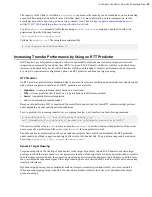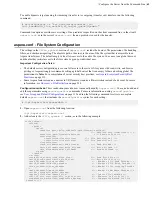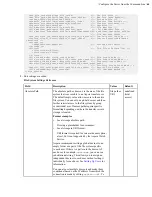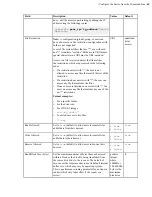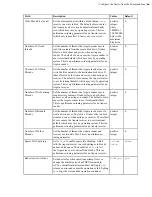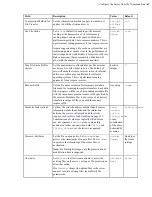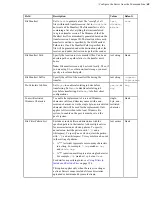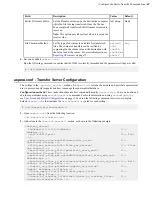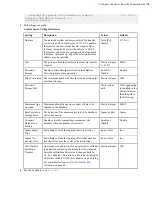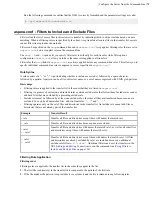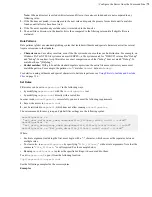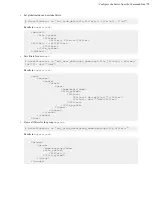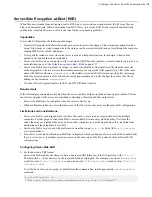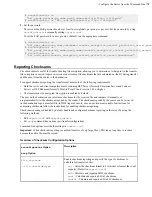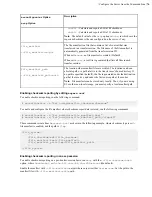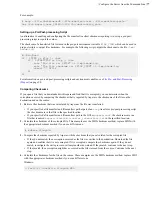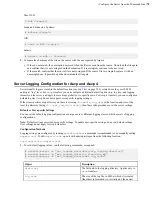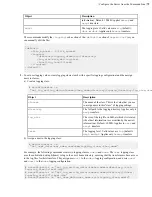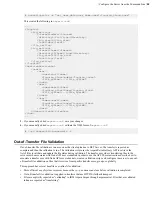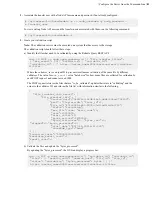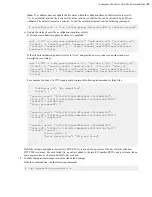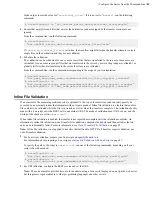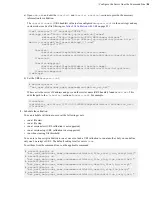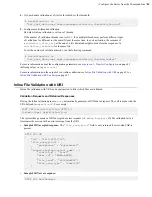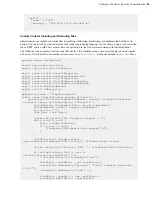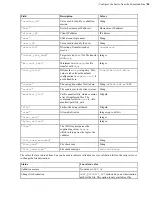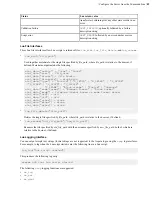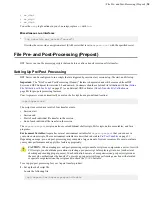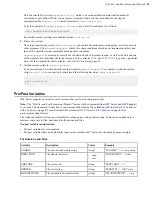
| Configure the Server from the Command Line |
76
asconfigurator
Option
ascp
Option
Description
sha384
- Calculate and report a SHA-384 checksum.
sha512
- Calculate and report a SHA-512 checksum.
Note:
The default value for the
ascp
option is
none
, in which case the
reported checksum is the one configured on the server, if any.
file_manifest
--file_manifest=
output
The file manifest is a file that contains a list of content that was
transferred in a transfer session. The file name of the file manifest is
automatically generated from the transfer session ID.
When set to
none
, no file manifest is created. (Default)
When set to
text
, a text file is generated that lists all files in each
transfer session.
file_manifest_path
--file_manifest_path=
path
The location where manifest files are written. The location can be an
absolute path or a path relative to the transfer user's home directory. If
no path is specified (default), the file is generated under the destination
path at the receiver, and under the first source path at the sender.
Note:
File manifests can be stored only locally. Thus, if you are using
S3 or other non-local storage, you must specify a local manifest path.
Enabling checksum reporting by editing
aspera.conf
To enable checksum reporting, run the following command:
# asconfigurator -x "set_node_data;file_checksum,
checksum
"
To enable and configure the file manifest where checksum report data is stored, run the following commands:
# asconfigurator -x "set_node_data;file_manifest,text"
# asconfigurator -x "set_node_data;file_manifest_path,
filepath
"
These commands create lines in
aspera.conf
as shown in the following example, where checksum type is
md5
,
file manifest is enabled, and the path is
/tmp
.
<file_system>
...
<file_checksum>md5</file_checksum>
<file_manifest>text</file_manifest>
<file_manifest_path>/tmp</file_manifest_path>
...
</file_system>
Enabling checksum reporting in an ascp session
To enable checksum reporting on a per-transfer-session basis, run
ascp
with the
--file-checksum=
hash
option, where
hash
is
sha1
,
md5
,
sha-512
,
sha-384
,
sha-256
, or
none
(the default).
Enable the manifest with
--file-manifest=
output
where
output
is either
text
or
none
. Set the path to the
manifest file with
--file-manifest-path=
path
.

